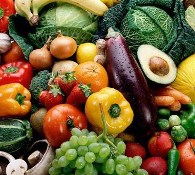 The high food inflation is seen as an impact of drought on the kharif crop and the rabi is expected to bring some relief, but an analysis of the trend in inflation rate shows deeper structural problems that go beyond crop cycles.
The high food inflation is seen as an impact of drought on the kharif crop and the rabi is expected to bring some relief, but an analysis of the trend in inflation rate shows deeper structural problems that go beyond crop cycles.
In contrast to popular perception that sugar and pulses have seen the sharpest increase in prices, it is horticulture and animal husbandry where inflation has been constantly pronounced. The two categories include perishables like milk, eggs, meat, fruits and vegetables.
Analysts say as the economy hit a high growth trajectory, demand for these high-quality food products rose at a faster pace than their supply, leading to rise in prices in these categories. The problem, they feel, cannot be tackled through crop cycles or buffer stocks.
"With growth in the overall economy, the demand for these (food items) has gone up much faster than the supply. I think we got trapped in a mindset that the demand would be slower," said Pronab Sen, outgoing chief statistician of India and secretary in the Ministry of Statistics and Programme Implementation.
The overall food inflation touched a decade high of 19.8 per cent in the second week of December 2009, though it showed signs of moderation in January. The latest figure for the week ended February 27 put it at 17.81 per cent.
"I think the food inflation situation is quite abysmal. The basic supply deficiency is understood, as over the last 10 years, capital formation in agricultural investment has been below average. The problem is not as simple as relying only on crop cycles. There are long-term structural problems. These would always restrict upside crop output," said Jyotinder Kaur, economist, HDFC Bank.
According to experts, the upward trend in horticulture and animal husbandry has been there for some time. For example, the average growth in horticulture production has been 4-4.5 per cent in the past three years, while demand has been growing at a rate of 7 per cent.
The situation has significant implications as high-quality food items do not have buffer stocking possibilities as foodgrains. "We have been running a constant deficit and storage can only act as a seasonal intervention, instead of a structural intervention," said Kaur.
Adding to this, high-quality foods have a higher share in the inflation index than foodgrains. Perishables constitute 10 per cent of the overall index, while foodgrains, including rice, constitute 7.4 per cent of the index. In calendar 2009, the rate of rise in prices of these articles accelerated than that of foodgrains.
The average rate of inflation in food articles was 12.42 per cent. Foodgrains, which constitute cereals and pulses and have 5 per cent weight in the entire index, registered an average inflation rate of 14.27 per cent, up from 6.4 per cent in 2008.
The average rate of inflation for eggs and meat has been 14.57 per cent in 2009, up from 3.7 per cent in 2008. Milk, which has had an annual average inflation rate of 6 per cent for three years, registered an average annual rate of inflation of 9.03 per cent in 2009.









 © 2025
© 2025